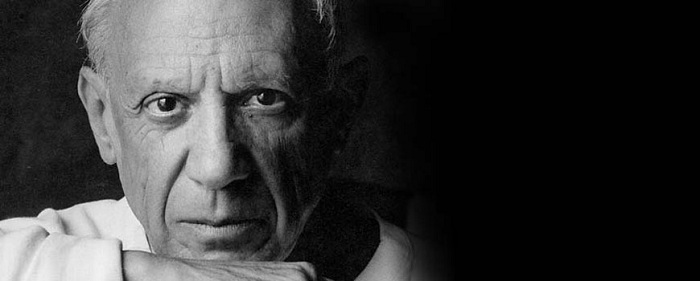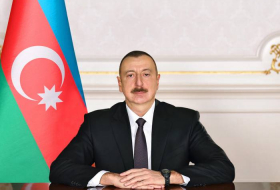
Pablo Picasso`s `Woman in a Hat (Olga),` 1935 PHOTO: SUCCESSION PICASSO/DACS LONDON, 2016
Over eight decades, Picasso produced tens of thousands of paintings, photos, prints, sculptures and ceramics. At every point, he showed a fascination with portraits, his own and others. This week, some of them will take center stage at an exhibition opening at London’s National Portrait Gallery.
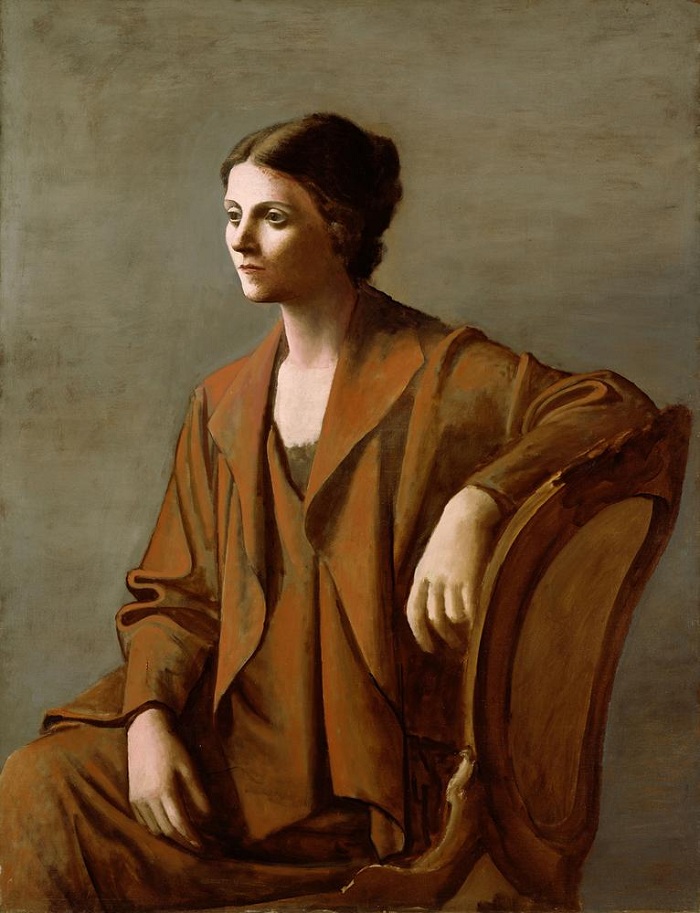
Pablo Picasso`s `Portrait of Olga,` 1923 PHOTO: SUCCESSION PICASSO/DACS LONDON, 2016
“Picasso’s Portraits” follows the artist’s gaze through about 80 depictions of friends, lovers, patrons and others in his circle. Several works on loan will appear in the U.K. for the first time, before moving to Barcelona’s Picasso Museum in the spring.
The artist’s earliest attempts, made as a teenager under the direction of his father, are realistic. Those paintings were easy for him, says curator Elizabeth Cowling. “The struggle was to do something more conceptual,” she said. “To pare a face down to an essence that epitomized the person.”
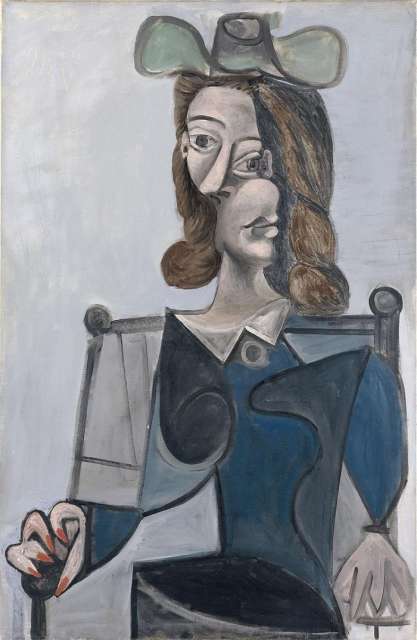
Pablo Picasso`s `Woman in a Hat, 9 June 1941,` 1941 PHOTO: SUCCESSION PICASSO/DACS LONDON, 2016
In the sketchbooks of his late teenage years, Picasso turned away from naturalism, repeatedly casting in simple lines and bold colors the faces of his artist friends who popularized the Barcelona cafe Els Quatre Gats. In 1901, when Picasso was around 20, the poet Jaume Sabartés was sitting in a Parisian cafe waiting for the artist to arrive. “Just when my desolation was keenest, Picasso appeared,” he wrote. A few days later, so did a portrait of the poet—a surprise for Sabartés, since Picasso had made no sketches at the cafe and had painted from memory. Sabartés said later that he had fallen “like a fly into the trap of Picasso’s stare.”
Picasso often used portraiture to experiment. He made portraits in his blue and rose periods, named after colors predominant in two stages of his early career, and in his photos and sculptures. Sometimes the artist tried different styles on the same model, capturing his lover Fernande Olivier in cubist and sculptural iterations that appear in the show. He rarely worked on commission and kept many of the portraits in his own collection or gave them as gifts to his subjects.
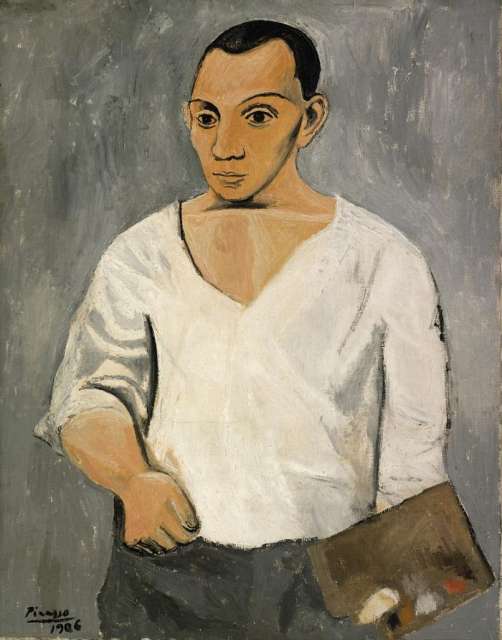
Pablo Picasso`s `Self-Portrait with Palette,` 1906 PHOTO: ESTATE OF PABLO PICASSO/ARTISTS RIGHTS SOCIETY (ARS) NEW YORK
“By the 1920s, having one’s portrait drawn by Picasso was a badge of honor in the art world,” Ms. Cowling writes in the exhibition catalog.
Some of Picasso’s most famous portraits are cubist masterpieces: faces with eyes askance and noses turned out at odd angles. “There are so many realities that in trying to encompass them all one ends in darkness,” he said in the late 1950s. “That is why, when one paints a portrait, one must stop somewhere, in a sort of caricature.”
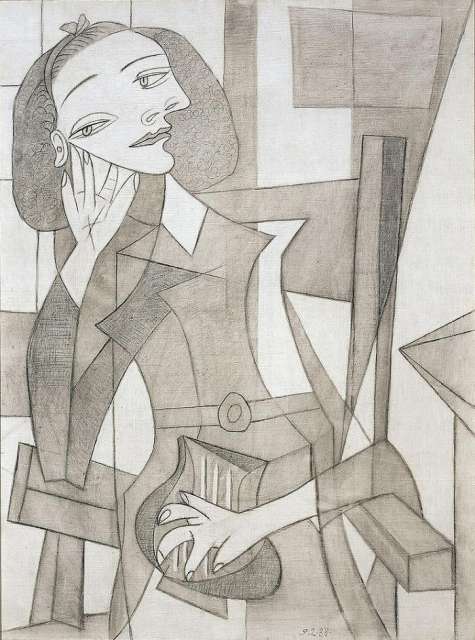
Pablo Picasso`s `Portrait of Nusch ƒluard,` 1938 PHOTO: SUCCESSION PICASSO/DACS LONDON, 2016
The exhibition includes renderings of the composer Igor Stravinsky, the French author and filmmaker Jean Cocteau and the Spanish artist Santiago Rusiñol. Ms. Cowling limited the show to portraits of named individuals, leaving out works with an unknown sitter. So the nameless “The Old Guitarist” isn’t featured.
Not all of the portraits came easily. When Picasso went to paint Gertrude Stein in 1905, he found himself stalled. Long, intense sittings were required until, according to Stein, a frustrated Picasso finally declared, “I can’t see you anymore when I look.” It was only when the avant-garde author left for a trip to Italy that he was able to complete the portrait, now hanging at New York’s Metropolitan Museum of Art.
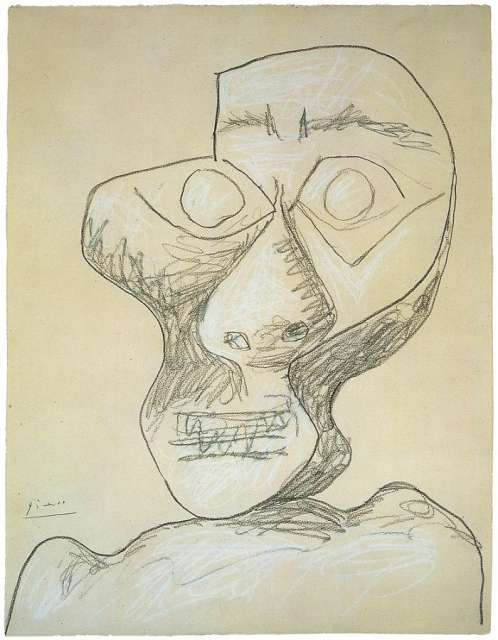
Pablo Picasso`s `Self-portrait 1972,` 1972 PHOTO: SUCCESSION PICASSO/DACS LONDON, 2016
Picasso usually preferred not to paint an individual from life, says Ms. Cowling, but Stein was pleased. “For me, it is I, and it is the only reproduction of me which is always I, for me,” the author said.
Toward the end of his life, Picasso sped up production, sometimes churning out multiple works a day. He turned increasingly to art of the past. Ms. Cowling included these riffs on old-master paintings in which the artist sometimes blends more than one subject—or works himself into the canvas. Picasso spent four months working from Velázquez’s famous group portrait, “Las Meninas” (often translated as “The Ladies-in-Waiting”). The London exhibition includes a few works from this Picasso series.

Pablo Picasso`s `Self-portrait 1972,` 1972 PHOTO: SUCCESSION PICASSO/DACS LONDON, 2016
In 1972, at the age of 91, the artist completed one of his final self-portraits, in which his face appears angular and skull-like. “I think maybe I touched on something,” he told a biographer at the time. “It’s not like anything I’ve done before.” That late portrait is in the London exhibition as well.
This large-scale celebration of his portraits, which ends in London on Feb. 5, would not have surprised the artist. “You have an interesting face. I would like to do a portrait of you,” he told another lover, Marie-Thérèse Walter, in 1927, according to John Richardson’s “A Life of Picasso.” “I feel we are going to do great things together. I am Picasso.”
/The Wall Street Journal/








